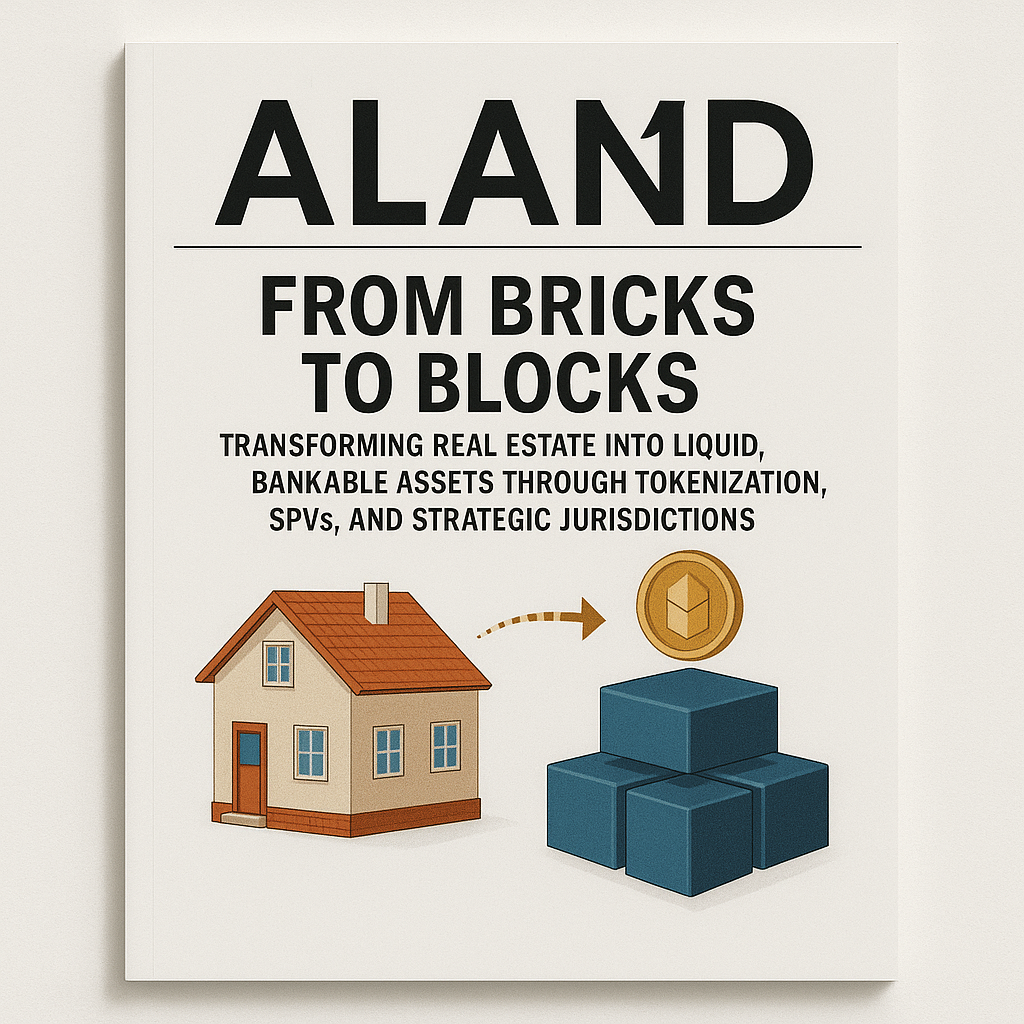From Bricks to Blocks: Transforming Real Estate into Liquid, Bankable Assets Through Tokenization, SPVs, and Strategic Jurisdictions
- Published Date: 4th Jun, 2025
-
4.8★ ★ ★ ★ ★(114)

Listen to the Spotify Podcast for this article
By Dr. Pooyan Ghamari, Swiss Economist and Founder of ALand Platform
The global real estate market, long characterized by illiquidity and opacity, is undergoing a profound transformation. Once the quintessential “illiquid asset”—tangible, geographically bound, and cumbersome to trade—is evolving into a dynamic, fractionalized, and highly bankable asset class. This shift is powered by the convergence of distributed ledger technology (DLT), sophisticated Special Purpose Vehicles (SPVs), and the strategic leveraging of forward-thinking jurisdictions. For investors, institutions, and policymakers, this represents a unique opportunity to unlock trillions in latent value, reshape investment strategies, and democratize access to one of the world’s most enduring wealth generators.
Traditional Real Estate vs. Tokenization
Traditional real estate investing involves large capital commitments, long holding periods, and significant transaction costs. Property transfers, due diligence, and fractional ownership complexities have limited access to a select few.
Blockchain technology, specifically tokenization, is dismantling these barriers by creating digital representations of real-world assets, breaking down large properties into smaller, tradable units—tokens. Each token represents fractional ownership, including economic rights such as rental income and appreciation.
Fractional Ownership & Enhanced Liquidity
Tokenization’s impact is transformative: a multimillion-dollar property can be owned by thousands, with tokens traded rapidly on secondary markets—much like stocks or bonds—bypassing lengthy legal processes. The vision of a truly liquid real estate market is becoming reality.
The Role of Special Purpose Vehicles (SPVs)
Tokenization alone is insufficient. Its full potential is realized when integrated with robust legal and financial frameworks via SPVs. An SPV is a legal entity created specifically to hold the real estate asset.
Advantages of SPVs include:
-
Financial Risk Isolation: Liabilities of the SPV don’t typically extend to parent companies.
-
Streamlined Ownership: Clear rights distribution to token holders.
-
Legal Wrapper: Tokens represent equity or debt in the SPV, not direct property ownership, simplifying tradability while securing the asset.
This framework transforms illiquid assets into bankable securities attractive to a broad range of investors, with blockchain transparency boosting trust and reducing fraud.
Strategic Jurisdictions
Not all jurisdictions support financial innovation equally. Leading regions like Switzerland, Liechtenstein, Singapore, UAE (Dubai and Abu Dhabi Global Market), and some Caribbean nations provide:
-
Regulatory clarity around digital securities
-
Favorable tax regimes
-
Strong legal protection for property rights
-
Supportive policies for blockchain innovation
Examples:
-
Switzerland: Known for financial stability and clear blockchain laws (DLT Act), making it a global digital assets hub.
-
Dubai: Active initiatives like DIFC and DMCC foster tokenization and real estate innovation.
These jurisdictions provide the certainty necessary for tokenized real estate to flourish and attract capital.
Opportunities Created by Tokenization
-
Unlocking Capital: Lower investment thresholds and improved liquidity allow broader investor access, including retail and smaller institutional funds.
-
Portfolio Diversification: Exposure to diverse property types and geographies with flexibility.
-
Revolutionized Financing: Developers can raise capital more efficiently via security tokens, accelerating innovative and sustainable projects.
-
Transparency & Efficiency: Immutable blockchain records reduce fraud and administrative costs.
-
Wealth Democratization: Fractional ownership empowers wider participation in real estate wealth creation, potentially reducing inequality.
Challenges to Overcome
-
Regulatory harmonization across borders
-
Standardizing valuation for tokenized assets
-
Educating institutions and investors about new instruments
Nonetheless, the trajectory is clear toward greater liquidity, accessibility, and bankability in real estate.
Future Vision
The future of real estate integrates physical structures with digital architectures that enable fractional ownership, easy transfers, and efficient valuation. Embracing tokenization, SPVs, and operating in strategic jurisdictions unlocks real estate’s full potential as liquid, bankable blocks fueling global economic growth.
About Dr. Pooyan Ghamari
Dr. Pooyan Ghamari is a Swiss economist, global thought leader, and founder of the ALand Platform. With expertise in macroeconomics, real estate investments, and international finance, he influences global economic strategy. His work focuses on emerging financial trends, digital economies, and high-growth market investment opportunities.
Recognized for expertise in real estate and immigration markets, Dr. Ghamari advises governments, institutions, and private investors. He advocates for financial decentralization, digital asset integration, and sustainable economic development, providing insights on transformative market dynamics.

